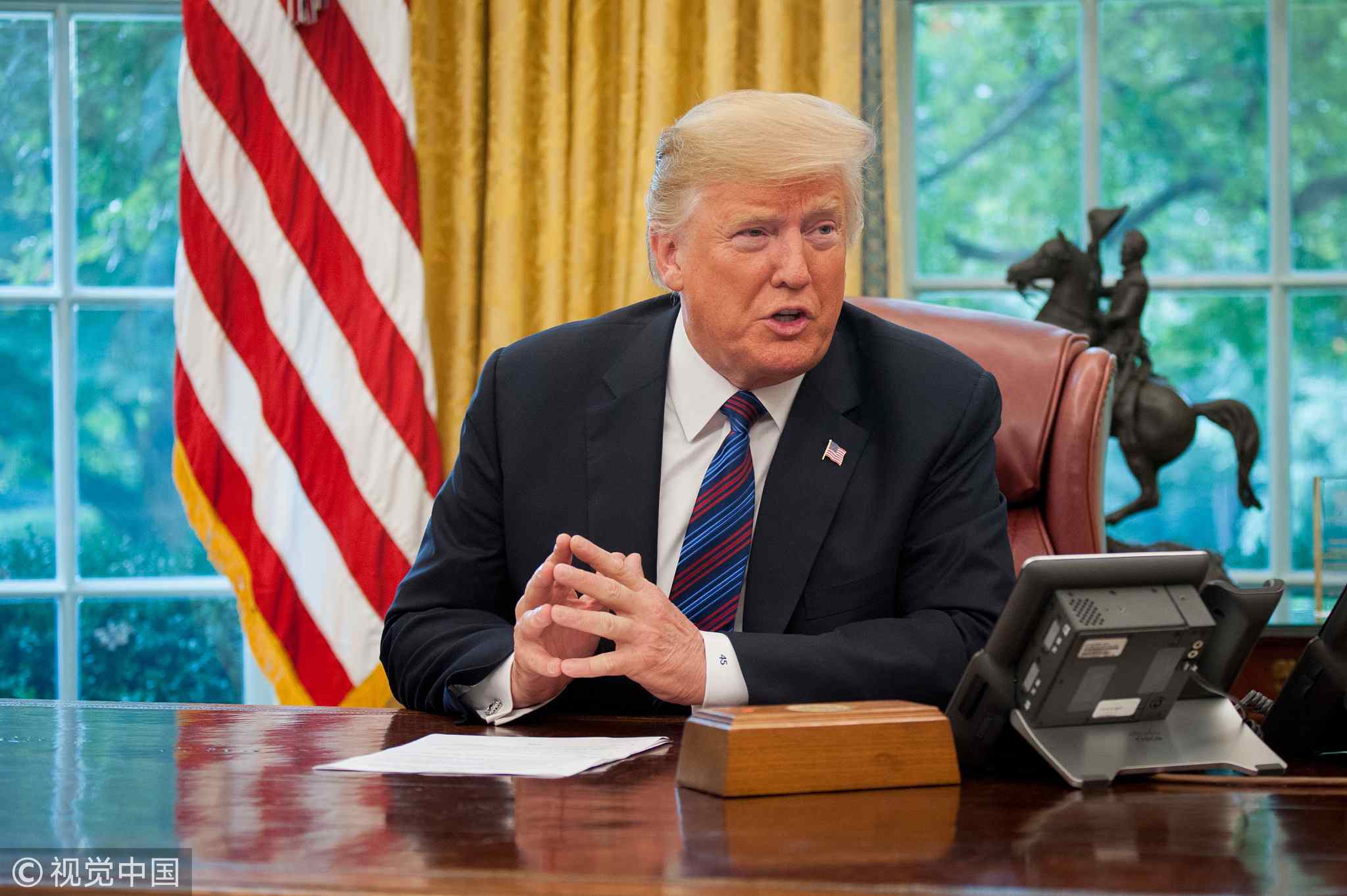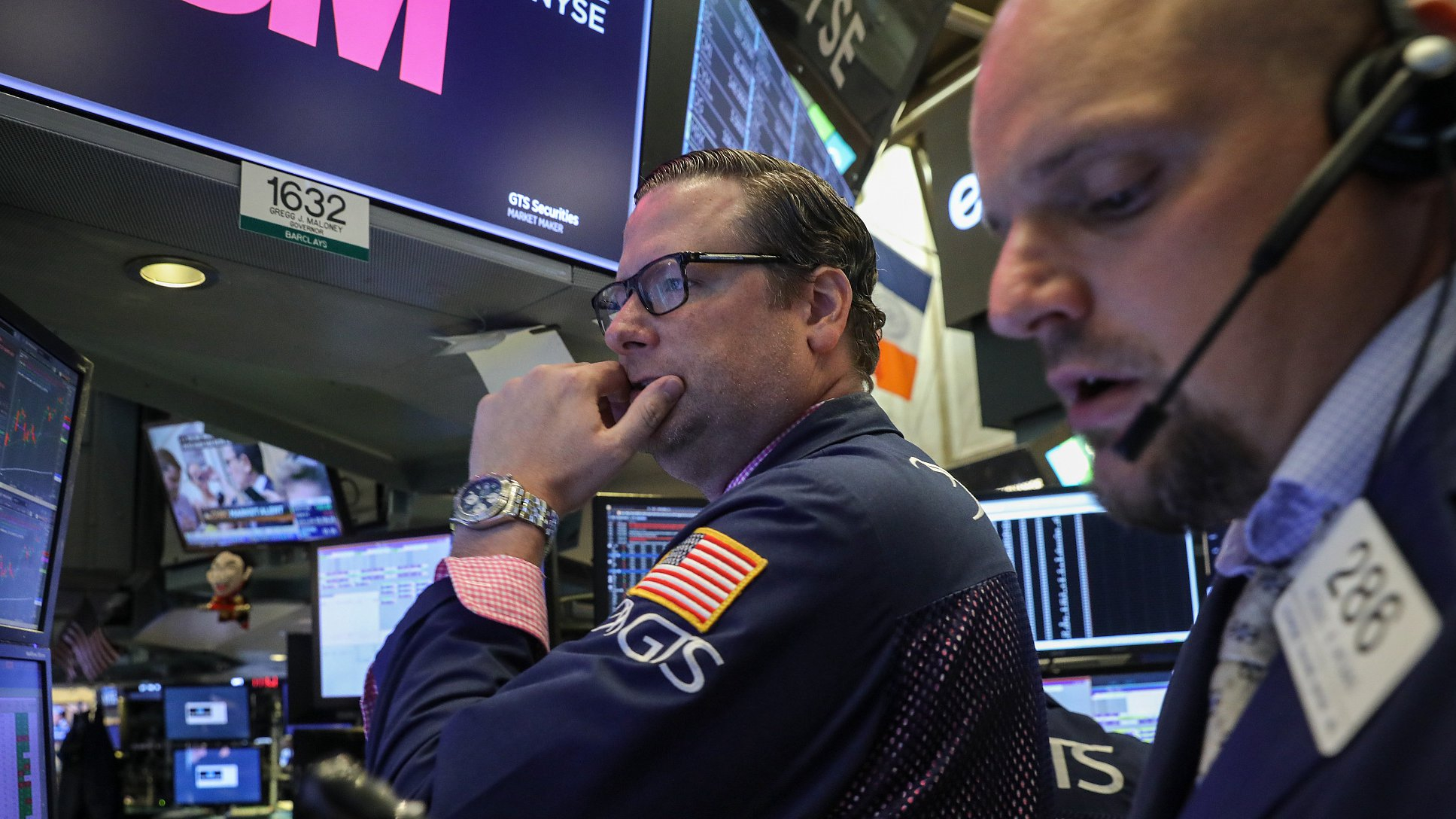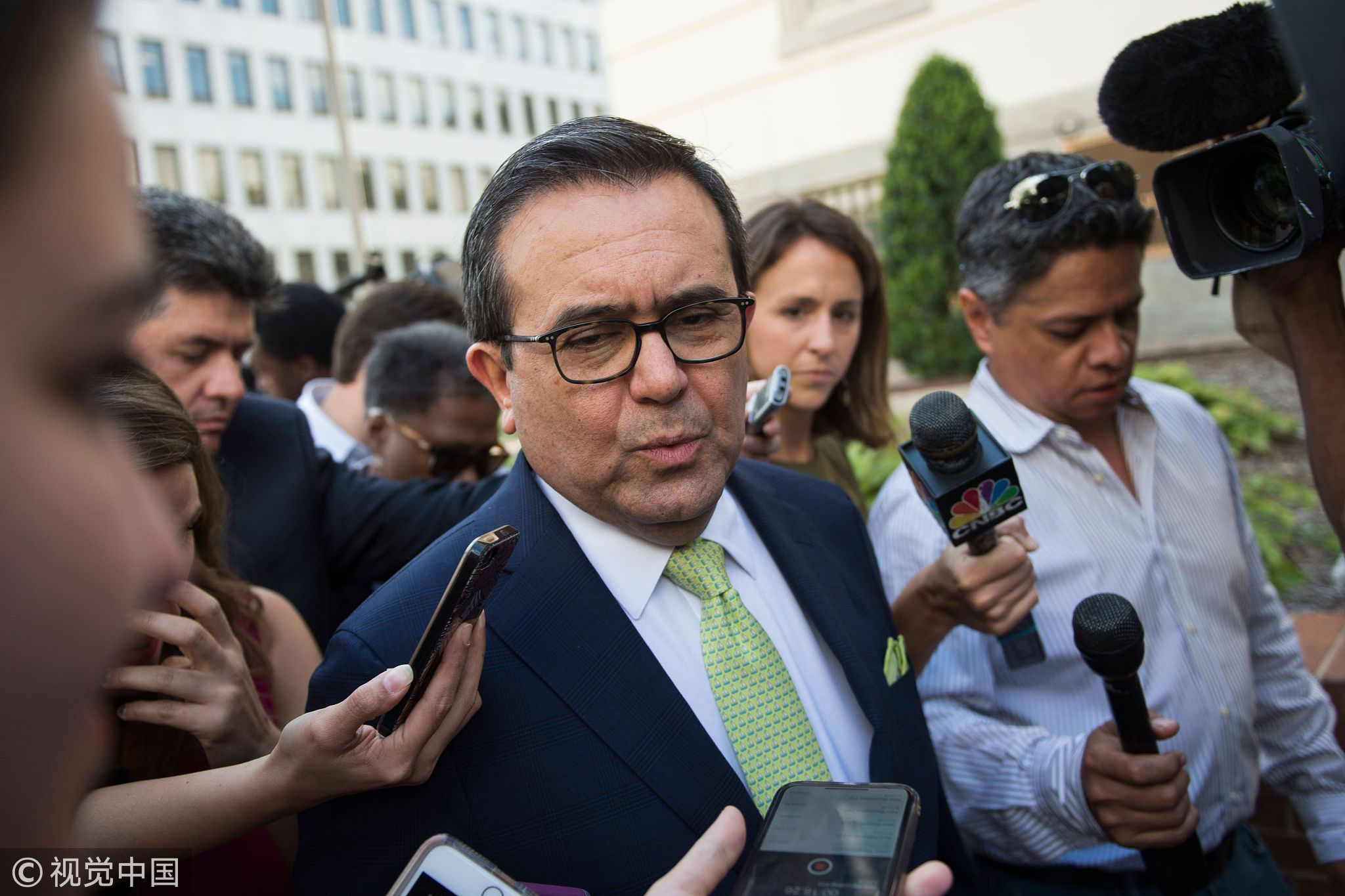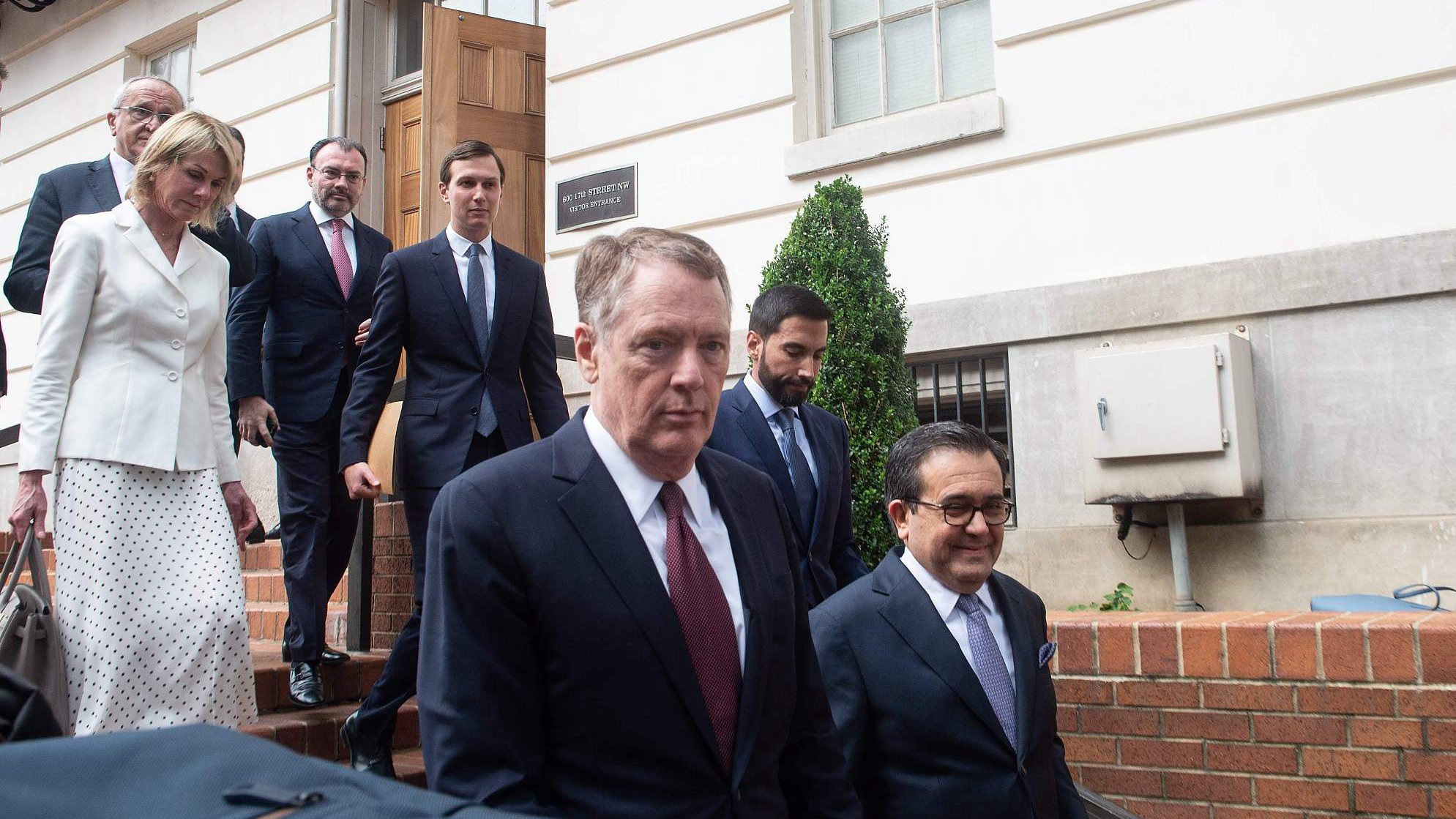Editor's note: Wang Peng is an associate researcher at Chongyang Institute for Financial Studies, Renmin University of China, and researcher at the Charhar Institute. The article reflects the author's opinion, and not necessarily the views of CGTN.
On August 27, US President Donald Trump announced soundly that the United States had reached "one of the biggest trade deals ever" with Mexico, and expressed his intention to terminate the North American Free Trade Agreement (NAFTA).
According to sources, the two countries have made major breakthroughs in the negotiations on energy and automobiles in the past few days. In this regard, Trump has reason to proudly say that he will immediately replace NAFTA with a US-Mexican bilateral agreement.

Trump announces a new trade agreement with Mexico in the White House, August 27, 2018. /VCG Photo.
Trump announces a new trade agreement with Mexico in the White House, August 27, 2018. /VCG Photo.
By that time, there were only two options for Canada: either join the new US-Mexico agreement or face the tariff penalty. At the same time, as Trump expected, the manufacturing industry will be fully revived, and a large number of job opportunities will soon flow back to the US.
As soon as this news broke, it caused an uproar in the field of North American and global trade. Some praised this "comprehensive upgrade" of NAFTA, which made the North American region move toward "fairer" and "more efficient" economic and trade integration.
Some are worried that this is just Trump's attempt to first win against Mexico, then use the US-Mexico agreement to force Canada to surrender. This attempt endangers the fairness and impartiality of free trade.
What is Trump's dissatisfaction with NAFTA?
NAFTA is a comprehensive free trade agreement signed by the US, Canada and Mexico in 1992 and it came into effect on January 1, 1994. Its predecessor was the 1989 US-Canada Free Trade Agreement.
At that time, although NAFTA had only three countries, it became the world's largest regional economic integration organization with a population of 360 million, a GDP of 6.45 trillion US dollars and an annual trade volume of 1.37 trillion US dollars.

Canadian Foreign Affairs Minister Chrystia Freeland speaks prior to her meeting with US Trade Representative Robert Lighthizer in Washington, DC, August 30, 2018. /VCG Photo.
Canadian Foreign Affairs Minister Chrystia Freeland speaks prior to her meeting with US Trade Representative Robert Lighthizer in Washington, DC, August 30, 2018. /VCG Photo.
The data shows that the trade volume of the three countries has tripled in the two decades after the signing of the agreement. However, things are not always smooth. In 2017, Trump, who pursued economic nationalism, repeatedly publicized his dissatisfaction with the agreement and even threatened that the US would withdraw from NAFTA.
The reason is similar to Trump's boycott of other similar FTAs. That is to say that these agreements are favorable to other countries and are not good for the US. The foreign products are imported into the US in large quantities, far more than the US exports, leading to an international trade deficit. This trend has also caused large job losses in the US.
At the repeated request of the US, Mexico and the US opened up several rounds of tough negotiations. Meanwhile, Trump also opened up a second front. On the one hand, he was at the negotiating table to suppress Mexico.

Traders and financial professionals work at the opening bell on the floor of the New York Stock Exchange, August 27, 2018, in New York City. /VCG Photo.
Traders and financial professionals work at the opening bell on the floor of the New York Stock Exchange, August 27, 2018, in New York City. /VCG Photo.
At the same time, from May this year, he instructed the US Department of Commerce to launch an investigation by saying "importing automobile components from Canada and Mexico endangers the US national security." Certainly, this conduct aims to put pressure on the negotiating opponents.
Trump's cunning tricks destroyed the global economic trade order
Trump was very lucky because he seized the opportunity of the governmental transition of Mexico at this juncture. Due to the domestic politics of Mexico, Trump actually faced two negotiating opponents – the outgoing Mexican President Enrique Pena Nieto and the incoming Andres Manuel Lopez Obrador.
For the former, it is convenient to restrict the successor by retaining some institutional arrangements of NAFTA; while for the latter, if he can reach an agreement before taking office, he may limit its negative political impact. Therefore, Trump has just grasped the mentality of both and used their interests respectively.

Mexico's Secretary of Economy Ildefonso Guajardo Villarreal speaks to reporters outside the Office of the US Trade Representative during a day of meetings on the NAFTA treaty, August 23, 2018, in Washington, DC. /VCG Photo.
Mexico's Secretary of Economy Ildefonso Guajardo Villarreal speaks to reporters outside the Office of the US Trade Representative during a day of meetings on the NAFTA treaty, August 23, 2018, in Washington, DC. /VCG Photo.
However, from the perspective of the international community, the US and Mexico may have set a bad precedent. The principle of the regional economic cooperation organization should have been a "spirit of community." It means, the member states have reached a common agreement to maintain and increase the common interests of the community.
However, Trump's tactics in this US-Mexico case, or Obama's misuse of TPP and TTIP, have deviated from the spirit of the community and pursued policies based on unilateralism or "Minilateralism."
In practice, the United States first reached a preliminary consensus with negotiating opponents with weaker bargaining power through bilateral approaches, and then used the result to force other opponents with stronger bargaining power to submit.
As an editorial in the Financial Times pointed out, the way that the new agreement was reached is as disturbing as the agreement itself. Morally speaking, this statement makes sense.
(Cover: US Trade Representative Robert Lighthizer and Mexican Secretary of Economy Ildefonso Guajardo Villarreal walk to the White House in Washington, DC, August 27, 2018. /VCG Photo.)






